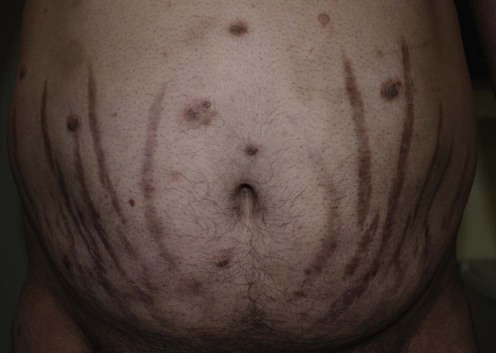 Excimer laser (308 nm) Excimer laser (308 nm) |
C |
 Intense pulsed light Intense pulsed light |
C |
 Copper bromide laser (577–511 nm) Copper bromide laser (577–511 nm) |
C |
 1064 nm Nd : YAG laser 1064 nm Nd : YAG laser |
C |
 Radiofrequency and 585 nm pulsed dye laser Radiofrequency and 585 nm pulsed dye laser |
B |
 Radiofrequency device Radiofrequency device |
C |
 UVB/UVA1 combined therapy (313 nm, 360 nm, 420 nm) UVB/UVA1 combined therapy (313 nm, 360 nm, 420 nm) |
C |
 20% glycolic acid/0.05% tretinoin 20% glycolic acid/0.05% tretinoin |
C |
 20% glycolic acid/10% L-ascorbic acid 20% glycolic acid/10% L-ascorbic acid |
C |
 70% glycolic acid lotion 70% glycolic acid lotion |
A |
 70% glycolic acid gel/40% trichloroacetic acid chemical peel 70% glycolic acid gel/40% trichloroacetic acid chemical peel |
D |
 Centella asiatica extract (Trofolastin) Centella asiatica extract (Trofolastin) |
A |
 Vitamin E/panthenol/hyaluronic acid/elastin/menthol (Verum) Vitamin E/panthenol/hyaluronic acid/elastin/menthol (Verum) |
A |
 Microdermabrasion Microdermabrasion |
E |


